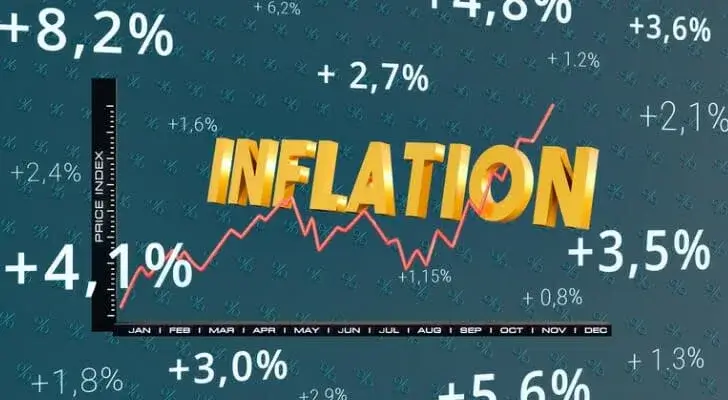As the latest data on inflation numbers was revealed this week, it turned out worse than predicted, with the Consumer Price Index (CPI), which measures the change in price of basic goods and services such as healthcare, energy, transportation, and food, rising 9.1 percent since last June. This is higher than the Dow Jones estimate of 8.8 percent. This is in fact the fastest rise in inflation since November 1981. What’s more, after adjusting for inflation, wages have decreased 3.6 percent since last June, leaving consumers feeling even more stressed.
Why is this happening and what can be done?
1. Low Supply
Supply shortages are coming from multiple facets of the production chain. First, the shortage of raw materials. Second, shortage of labor, and third, increased cost of transportation. Raw material shortages are caused by difficulties of production due to labor shortages and transport costs, meaning this problem is extremely cyclical, but environmental concerns are also contributing heavily to raw material shortages. Sand, the world’s second-most consumed raw material behind water, is facing shortages because consumption rates are far higher than the rate at which it can be naturally produced. Sand is the primary substance used in construction of roads, bridges, trains, glass, and even computer chips.
The pandemic created a labor shortage that caused bottlenecks at factories, ports, and in trucking. While these industries have partly recovered in the U.S., they have not in other parts of the world. China and some other manufacturing-centric economies are still under strict pandemic lockdowns. Factories are simply not producing enough to keep up with the increased demand. Rising interest rates make business ownership more costly and owners more reluctant to hire.
Lastly, Russia’s invasion of Ukraine has caused a spike in oil prices, further increasing the cost of manufacturing and shipping. This is not the only factor, as demand increases and supply shrinks, prices rise to help manage demand. The transportation industry is especially sensitive to changes in the supply-demand balance and to volatilities in fuel costs. As demand remains high without being met by increasing supply, consumers will be faced with the choice to continue spending or to save. If consumers are willing to pay, it will be difficult to recalibrate the supply-demand balance.
2. High Demand
Demand is high as pandemic restrictions ease and consumers are eager to spend money again. High month-to-month inflation has not dampened this pattern. In March, consumers spent 18 percent more than they did pre-pandemic, despite 8.5 percent inflation. The pandemic prompted a savings surge from 7-34 percent caused by $1,200 stimulus checks and understandable uncertainty about the future. In fact, the rate at which Americans saved in 2020 was so high that economists were concerned about how Americans would use their savings in the future, and whether it would lead to rampant inflation. Two years on, most estimates today conclude that the stimulus contributed around 3-3.5 percent of today’s 9.1 percent inflation. People are spending more money on goods and services that were put on pause using the pandemic either due to restrictions, lack of necessity, or unavailability. The combination of high demand and low supply forces prices to increase to balance the scale.
3. How long will it last?
No one can exactly predict how long inflation will last. The Federal Reserve, headed by Jerome Powell, has already raised interest rates twice this year and there are talks about doing it again. Economists have been incorrectly predicting that inflation will subside since January 2021. Multiple factors must be considered in making estimates, including consumer demand, supply chain shortages, the war in Ukraine, environmental concerns, geopolitical concerns such as the U.S. relationship with OPEC countries, and more. Alan Binder, former vice chairman of the Fed, predicted that “inflation will fall as quickly and dramatically as it rose”, but that “raising interest rates won’t be the end-all solution” because of the multitude of other pressing issues that must also be addressed.
4. What can be done?
The first and most obvious option is for the Fed to raise interest rates. Higher interest rates, to put it simply, make it more expensive to borrow money, meaning people are typically less likely to spend money on new investments, such as businesses or homes. They are then less likely to hire employees and spend money on their new businesses, which then allows for spending to slow and demand to drop. This would then allow for the supply-demand balance to even out and for inflation rates to fall.
Many have been critical of the Fed’s response. Former Treasury Secretary Lawrence Summers said that high government spending last year meant “it was reasonable to expect that the bathtub would overflow.” Former Fed Governor Kevin Warsh declared inflation a “clear and present danger to the American people” and criticized Powell’s “slow” reaction. As the Fed considers a more aggressive approach, some say that it won’t make a difference until other issues subside, including supply chain shortages.
Raising interest rates also increases the likelihood of entering a recession. Raising rates weakens the job market and therefore the broader economy. In fact, interest rates are the strongest contributing variable in determining unemployment because higher rates make entrepreneurship more costly. Slower growth allows for supply to catch up, which can successfully dampen inflation. Nonetheless, many analysts say that the U.S. has a 40 percent chance of entering a recession in 2023.
5. Long term effects
Inflation erodes purchase power of the dollar, and if it continues, it can eat away at Americans’ savings. Inflation is necessary as it encourages spending, but is most helpful when hovering around 2 percent. Controlled inflation also boosts the real estate and energy markets, as well as increases employment and economic growth. In the long run, inflation is far more costly. As money loses its value, consumers are encouraged to spend and discouraged from saving. However, consumer savings and investment in financial markets are necessary to allow for borrowing money and investing in goods and technology. Over time, decreased saving slows economic growth.
Inflation also allows for inefficient government spending. When the government can print money whenever it is needed for various spending bills, it causes inflation. Higher prices not only allow for more money to be collected through sales taxes, they also allow the central bank and federal government to make money when inflation rates are high.










